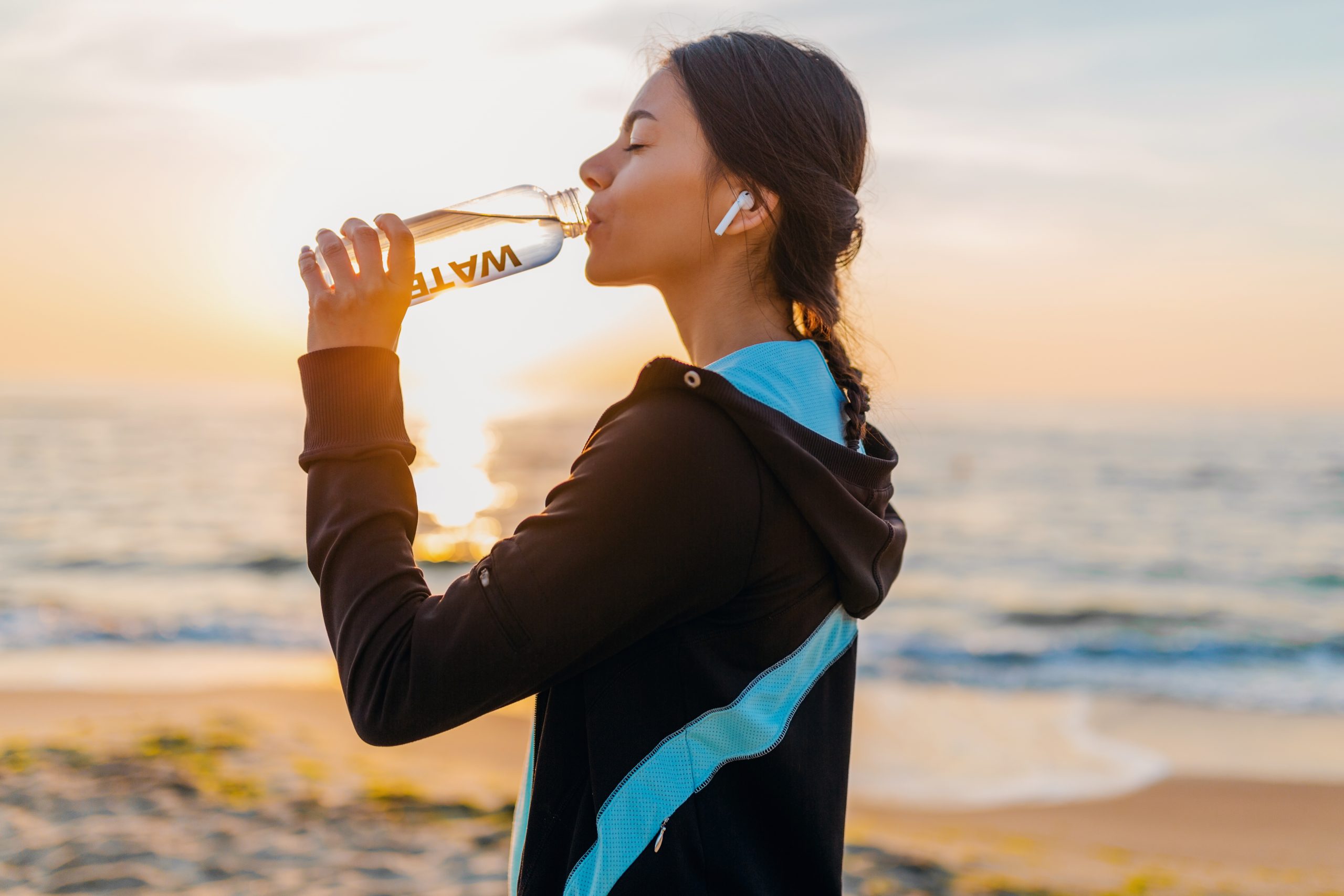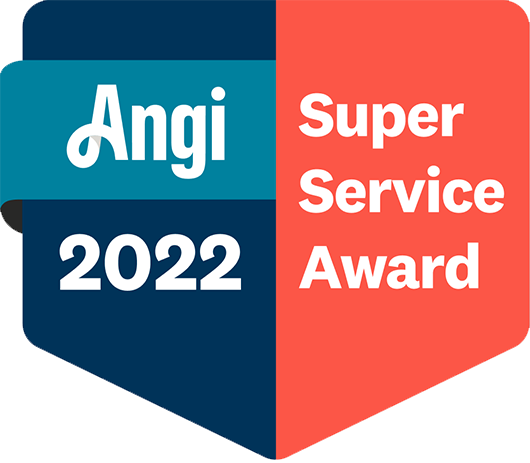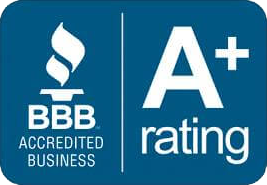Bottled water is sold all over the world. Available in grocery and convenience stores, restaurants, recreation centers, schools, gas stations, and almost everywhere… bottled water is a staple stock item. But is bottled water safe?
In recent years there has been a lot of controversy about water. Some say the water in the bottles, even in fancy labeled brands claiming to come from far away mountain springs, is actually from city tap water. Others say that city tap water is actually good for you because it’s fluoridated and fluoride is good for your teeth − especially children’s teeth.
But what is the truth about bottled water? And how safe is plastic, really? And how are these chemicals impacting your health?
In this article I will be shedding some light on these very important questions.
As a child, I remember my teacher in school getting us to memorize this famous slogan: “reduce, reuse, recycle.” Now, the majority of Americans know they should recycle their plastic bottles. But where does all this plastic come from in the first place?
Over 60 million water bottles are thrown away each day in the United States alone and only a small percentage of these (around one in six) get recycled. No wonder so many chemicals are being leached into our precious soil. Imagine the environmental impact this has.
Bottled water is a trillion dollar industry. How does that affect the environment and our drinking water? If the toxic chemicals are leaching into the soil, how much more is going into our rivers and lakes? Could there be a connection too between our drinking water and cancer?
3 Hazards Commonly Found in Plastic Water Bottles
1. Bisphenol A (BPA)
Bisphenol A (BPA) is a chemical that Big Industry uses to stabilize epoxy resins and polycarbonate plastics or hard plastics. It is also used in softer plastics to prevent cracking.
What does that have to do with your drinking water? It’s important to know that the plastic used for bottled water often contains BPA. It’s known to leach into the water when exposed to heat, which in turn creates “faux estrogen” or what is also known as bad estrogen. High levels of circulating bad estrogen is recognized as a cause of ovarian, prostate, and breast cancers.
Furthermore, BPA has been found to adversely affect fetuses, infants and children’s brains, and prostate glands. Behavior disorders are also prevalent from BPA contamination leading to hyperactivity and aggression in children.
BPA is used in plastic containers for food, and the linings of cans of infant formula and many food products. Again the problem is the leaching of the chemicals into the food − especially if it is microwaved. When you eat foods from these containers, you’re at risk of being poisoned by this dangerous chemical. Some say that it is such a small amount that the effects are negligible. But many researchers are now pointing out that the chemicals accumulate and are the reason for such a high concentration of BPA found in umbilical cords and soft tissues in the body.
BPA also affects marine life in freshwater in a similar fashion as humans. It gets in the air from evaporation out of contaminated water so it’s possible to get more doses via breathing infected air. Finally, it is used in paper receipts so whenever we touch them we get a small dose of BPA. All these small sources add up over time to a large dose that accumulates in the body and can lead to the following health hazards.
BPA has been found to adversely affect the endocrine and reproductive systems and to increase the risk of breast, prostate, ovarian, and brain cancer. It also increases the occurrence of hyperactivity, attention deficit disorder, aggressive behavior, and asthma.
These problems can be prevented if we use glass and stainless steel containers instead of plastic. It’s important to take a stand and push for the discontinued use of BPAs to protect our environment and our bodies.
2. Polyethylene terephthalate (PET)
PET bottles are BPA-free but they pose other potential health risks. According to the North Dakota State University reports, PET bottles contain contaminants of fecal matter, saliva, and food residues in the plastic so they are hazardous to your health when re-used. This is primarily as a result of the soft plastic which is nearly impossible to clean, thus the reason for the significant presence of contaminants after multiple usage.
3. Phthalates
Phthalates are another chemical compound used to make plastic flexible, particularly PVC (polyvinyl chloride). These also leach into the water contained in their bottles or water supplied by PVC pipes. The problems they cause in humans include: liver cancer, testicular atrophy, and sterility in males.
How Do You Know What’s In Your Plastic Water Bottle?
How do you know what kind of plastic was used in the various brands of water bottles? In my opinion, there is no way that you can be certain whether the plastic used was free from contaminants or dangerous chemicals because bottling companies change plastics without notice. As a result I suggest avoiding plastic water bottles altogether.
Is Tap Water Better Than Bottled Water?
So, the next question is…why don’t I just get rid of all this plastic bottled water nonsense and just use tap water? Since statistics show 40% of the water in bottled water is from the tap anyway… then why not? <strong.Yes, you should use tap water. But only after you’ve filtered it with a quality filtration system, which I will discuss in a moment.
If you use tap water without filtration you risk contamination of heavy metals, chemicals, bacteria, and other potentially dangerous unknown substances. If you think about it, city tap water is held in massive containers that come to your home through a large network of pipes with questionable hygienic standards. Therefore, the water itself has to be treated with chlorine, fluoride, arsenic, and other unhealthy chemical poisons in order to ensure you’re getting “clean” water.
And then you might ask, “What’s wrong with that? It’s clean water after all.” The problem is the chemicals. Even in small amounts you don’t want fluoride and chlorine accumulating in your system. Yes, it’s only small quantities, but if you’re taking them in regularly it adds up to a big problem. And if you’re cooking with and showering in fluoridated and chlorinated water, it’s even worse.
How do Fluoride And Chlorine Adversely Affect Your Body?
Boiling water kills bacteria but concentrates the fluoride and other chemicals. This is a problem because fluoride is a neurotoxic chemical causing brain damage. Man-made fluoride has been reported by researchers to reduce IQ levels and make people more docile.
Chlorine, on the other hand, is poisonous. Pool water is a highly concentrated form and is known to cause breathing problems, red itchy eyes, swelling of the mucous membranes, dizziness, headaches, and more in many people.
If you are sitting near the pool sunbathing you will be breathing in the gaseous form which is highly toxic. Consistent exposure will lead to a dramatic increase of free radical damage to your skin and airways as well as hair. This means high risk for contracting cancer.
If you have your own pool you may consider using a silver-copper ion generator instead. This is an issue that should be taken seriously as people who are exposed to chlorinated water are at a 93% higher risk of developing various cancers.
Breast cancer has been linked to high levels of chlorine compounds found in the breast tissue, according to a study from Hartford Connecticut. So a little chlorine to kill bacteria has gone a long way to killing humans bit by bit through the accumulation of the chemicals in the body.
Furthermore, chlorine is effective in destroying probiotics, the healthy bacteria that aids in digestion in the body. This in turn leads to digestive distress, heartburn, acid reflux, leaky gut, ulcers, constipation, and eventually gastrointestinal tract related cancers.
What About Home Water Filtration Methods?
Reverse Osmosis is becoming popular, but it removes minerals that need to be replaced to avoid loss of minerals due to leaching.
Ionized water machines boast higher energy and alkalinity to restore the body to a balanced pH. These should be used with caution, following the instructions carefully, and possibly consulting a health professional that can assist you.
Distilled Water is formed from boiling the water and collecting the steam in a condenser that collects the purified water in a clean container. If you distill your own water using glass and storing it in glass, then it should be okay as far as being contaminant free. But when it is ingested it leaches the minerals from the body causing all manner of mineral damage.If you purchase distilled water that has been stored in plastic bottles it contains phthalates − components of the plastic- which are dangerous for your health. It has been reported that phthalates interrupt endocrine functions in the body resulting in breast cancer, pancreatic cancer, thyroid problems, and more. So, get distilled water in glass and add minerals from quality mineral salt if you want to prevent leaching.
Is Vitamin Water A Healthy Choice?
One of the worst health scams Big Industry has come up with (other than deceptive labels on other products) is Vitamin Water.
Most vitamin water contains high fructose corn syrup and food dyes which wreak havoc on the body’s delicate internal systems.
Corn syrup has been linked to obesity, diabetes, and immune and metabolic disorders. It also feeds cancer and creates acidic conditions in the body that encourage bacteria growth and the proliferation of viruses as well as other chronic diseases.
Food dyes, on the other hand, are linked to various cancers, behavioral disorders, mental dysfunctions, and metabolic problems. So avoid vitamin water and other so-called “health drinks” manufactured by Big Industry. The truth is that man-made water enriched with synthetic vitamins and minerals is as bad as or worse than sodas. But at least with soda you are aware of the health risk and can limit your intake.
With supposed health drinks you are unlikely to recognize the disastrous effects until after you have been duly poisoned. Even then you may not make the connection until a serious problem occurs.
Bottled water is sold all over the world. Available in grocery and convenience stores, restaurants, recreation centers, schools, gas stations, and almost everywhere… bottled water is a staple stock item. But is bottled water safe?
In recent years there has been a lot of controversy about water. Some say the water in the bottles, even in fancy labeled brands claiming to come from far away mountain springs, is actually from city tap water. Others say that city tap water is actually good for you because it’s fluoridated and fluoride is good for your teeth − especially children’s teeth.
But what is the truth about bottled water? And how safe is plastic, really? And how are these chemicals impacting your health?
In this article I will be shedding some light on these very important questions.
As a child, I remember my teacher in school getting us to memorize this famous slogan: “reduce, reuse, recycle.” Now, the majority of Americans know they should recycle their plastic bottles. But where does all this plastic come from in the first place?
Over 60 million water bottles are thrown away each day in the United States alone and only a small percentage of these (around one in six) get recycled. No wonder so many chemicals are being leached into our precious soil. Imagine the environmental impact this has.
Bottled water is a trillion dollar industry. How does that affect the environment and our drinking water? If the toxic chemicals are leaching into the soil, how much more is going into our rivers and lakes? Could there be a connection too between our drinking water and cancer?
3 Hazards Commonly Found in Plastic Water Bottles
1. Bisphenol A (BPA)
Bisphenol A (BPA) is a chemical that Big Industry uses to stabilize epoxy resins and polycarbonate plastics or hard plastics. It is also used in softer plastics to prevent cracking.
What does that have to do with your drinking water? It’s important to know that the plastic used for bottled water often contains BPA. It’s known to leach into the water when exposed to heat, which in turn creates “faux estrogen” or what is also known as bad estrogen. High levels of circulating bad estrogen is recognized as a cause of ovarian, prostate, and breast cancers.
Furthermore, BPA has been found to adversely affect fetuses, infants and children’s brains, and prostate glands. Behavior disorders are also prevalent from BPA contamination leading to hyperactivity and aggression in children.
BPA is used in plastic containers for food, and the linings of cans of infant formula and many food products. Again the problem is the leaching of the chemicals into the food − especially if it is microwaved. When you eat foods from these containers, you’re at risk of being poisoned by this dangerous chemical. Some say that it is such a small amount that the effects are negligible. But many researchers are now pointing out that the chemicals accumulate and are the reason for such a high concentration of BPA found in umbilical cords and soft tissues in the body.
BPA also affects marine life in freshwater in a similar fashion as humans. It gets in the air from evaporation out of contaminated water so it’s possible to get more doses via breathing infected air. Finally, it is used in paper receipts so whenever we touch them we get a small dose of BPA. All these small sources add up over time to a large dose that accumulates in the body and can lead to the following health hazards.
BPA has been found to adversely affect the endocrine and reproductive systems and to increase the risk of breast, prostate, ovarian, and brain cancer. It also increases the occurrence of hyperactivity, attention deficit disorder, aggressive behavior, and asthma.
These problems can be prevented if we use glass and stainless steel containers instead of plastic. It’s important to take a stand and push for the discontinued use of BPAs to protect our environment and our bodies.
2. Polyethylene terephthalate (PET)
PET bottles are BPA-free but they pose other potential health risks. According to the North Dakota State University reports, PET bottles contain contaminants of fecal matter, saliva, and food residues in the plastic so they are hazardous to your health when re-used. This is primarily as a result of the soft plastic which is nearly impossible to clean, thus the reason for the significant presence of contaminants after multiple usage.
3. Phthalates
Phthalates are another chemical compound used to make plastic flexible, particularly PVC (polyvinyl chloride). These also leach into the water contained in their bottles or water supplied by PVC pipes. The problems they cause in humans include: liver cancer, testicular atrophy, and sterility in males.
How Do You Know What’s In Your Plastic Water Bottle?
How do you know what kind of plastic was used in the various brands of water bottles? In my opinion, there is no way that you can be certain whether the plastic used was free from contaminants or dangerous chemicals because bottling companies change plastics without notice. As a result I suggest avoiding plastic water bottles altogether.
Is Tap Water Better Than Bottled Water?
So, the next question is…why don’t I just get rid of all this plastic bottled water nonsense and just use tap water? Since statistics show 40% of the water in bottled water is from the tap anyway… then why not? <strong.Yes, you should use tap water. But only after you’ve filtered it with a quality filtration system, which I will discuss in a moment.
If you use tap water without filtration you risk contamination of heavy metals, chemicals, bacteria, and other potentially dangerous unknown substances. If you think about it, city tap water is held in massive containers that come to your home through a large network of pipes with questionable hygienic standards. Therefore, the water itself has to be treated with chlorine, fluoride, arsenic, and other unhealthy chemical poisons in order to ensure you’re getting “clean” water.
And then you might ask, “What’s wrong with that? It’s clean water after all.” The problem is the chemicals. Even in small amounts you don’t want fluoride and chlorine accumulating in your system. Yes, it’s only small quantities, but if you’re taking them in regularly it adds up to a big problem. And if you’re cooking with and showering in fluoridated and chlorinated water, it’s even worse.
How do Fluoride And Chlorine Adversely Affect Your Body?
Boiling water kills bacteria but concentrates the fluoride and other chemicals. This is a problem because fluoride is a neurotoxic chemical causing brain damage. Man-made fluoride has been reported by researchers to reduce IQ levels and make people more docile.
Chlorine, on the other hand, is poisonous. Pool water is a highly concentrated form and is known to cause breathing problems, red itchy eyes, swelling of the mucous membranes, dizziness, headaches, and more in many people.
If you are sitting near the pool sunbathing you will be breathing in the gaseous form which is highly toxic. Consistent exposure will lead to a dramatic increase of free radical damage to your skin and airways as well as hair. This means high risk for contracting cancer.
If you have your own pool you may consider using a silver-copper ion generator instead. This is an issue that should be taken seriously as people who are exposed to chlorinated water are at a 93% higher risk of developing various cancers.
Breast cancer has been linked to high levels of chlorine compounds found in the breast tissue, according to a study from Hartford Connecticut. So a little chlorine to kill bacteria has gone a long way to killing humans bit by bit through the accumulation of the chemicals in the body.
Furthermore, chlorine is effective in destroying probiotics, the healthy bacteria that aids in digestion in the body. This in turn leads to digestive distress, heartburn, acid reflux, leaky gut, ulcers, constipation, and eventually gastrointestinal tract related cancers.
What About Home Water Filtration Methods?
Reverse Osmosis is becoming popular, but it removes minerals that need to be replaced to avoid loss of minerals due to leaching.
Ionized water machines boast higher energy and alkalinity to restore the body to a balanced pH. These should be used with caution, following the instructions carefully, and possibly consulting a health professional that can assist you.
Distilled Water is formed from boiling the water and collecting the steam in a condenser that collects the purified water in a clean container. If you distill your own water using glass and storing it in glass, then it should be okay as far as being contaminant free. But when it is ingested it leaches the minerals from the body causing all manner of mineral damage.If you purchase distilled water that has been stored in plastic bottles it contains phthalates − components of the plastic- which are dangerous for your health. It has been reported that phthalates interrupt endocrine functions in the body resulting in breast cancer, pancreatic cancer, thyroid problems, and more. So, get distilled water in glass and add minerals from quality mineral salt if you want to prevent leaching.
Is Vitamin Water A Healthy Choice?
One of the worst health scams Big Industry has come up with (other than deceptive labels on other products) is Vitamin Water.
Most vitamin water contains high fructose corn syrup and food dyes which wreak havoc on the body’s delicate internal systems.
Corn syrup has been linked to obesity, diabetes, and immune and metabolic disorders. It also feeds cancer and creates acidic conditions in the body that encourage bacteria growth and the proliferation of viruses as well as other chronic diseases.
Food dyes, on the other hand, are linked to various cancers, behavioral disorders, mental dysfunctions, and metabolic problems. So avoid vitamin water and other so-called “health drinks” manufactured by Big Industry. The truth is that man-made water enriched with synthetic vitamins and minerals is as bad as or worse than sodas. But at least with soda you are aware of the health risk and can limit your intake.
With supposed health drinks you are unlikely to recognize the disastrous effects until after you have been duly poisoned. Even then you may not make the connection until a serious problem occurs.
About Simply PURE Water Filtration Services
Living in and serving the Long Island community, we strive to make sure everyone has access to clean, healthy water. We have the experience, knowledge, and industry-leading technology to provide clean water solutions for water impurities, contaminants, hard water, bad tasting/odors, well water, acidity & pH regulations.
Proud members of the WQA (Water Quality Association), and the EWQA (Eastern Water Quality Association), we adhere to strict guidelines and the WQA code of ethics. As a Pentair True Blue Partner and Authorized Distributor of Pentair Products, there’s nothing comparable to the performance, and efficiency of our whole house purification systems, water softeners, neutralizers, whole-house filters, and alkaline reverse osmosis systems for drinking in the convenience of your home.
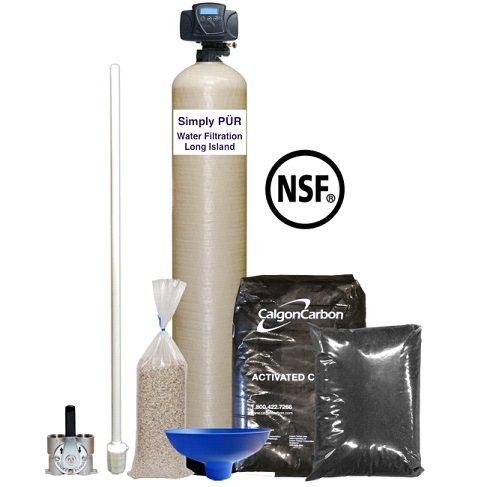
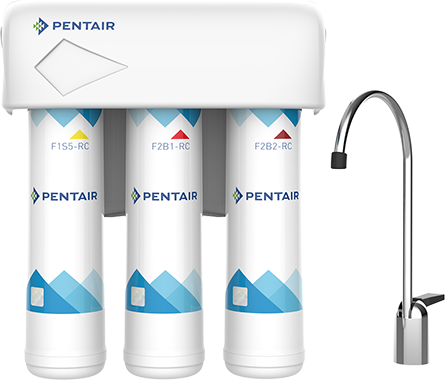
Our products are all NSF / ANSI certified, meeting the highest safety standards and quality performance. Providing our community with only the best experience of high quality water that’s Simply PURE from our family to yours!
Simply PURE utilizes accurate testing methods before and after system installation, as well as annual maintenance of all your water treatment equipment. Our Revolutionary Custom Built Water Treatment systems upon the completion of a Free In-Home Water Analysis, or an in-depth Comprehensive Water Analysis of your choice sent to our Certified Laboratory.

